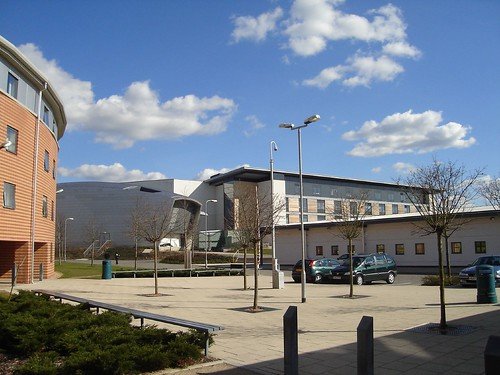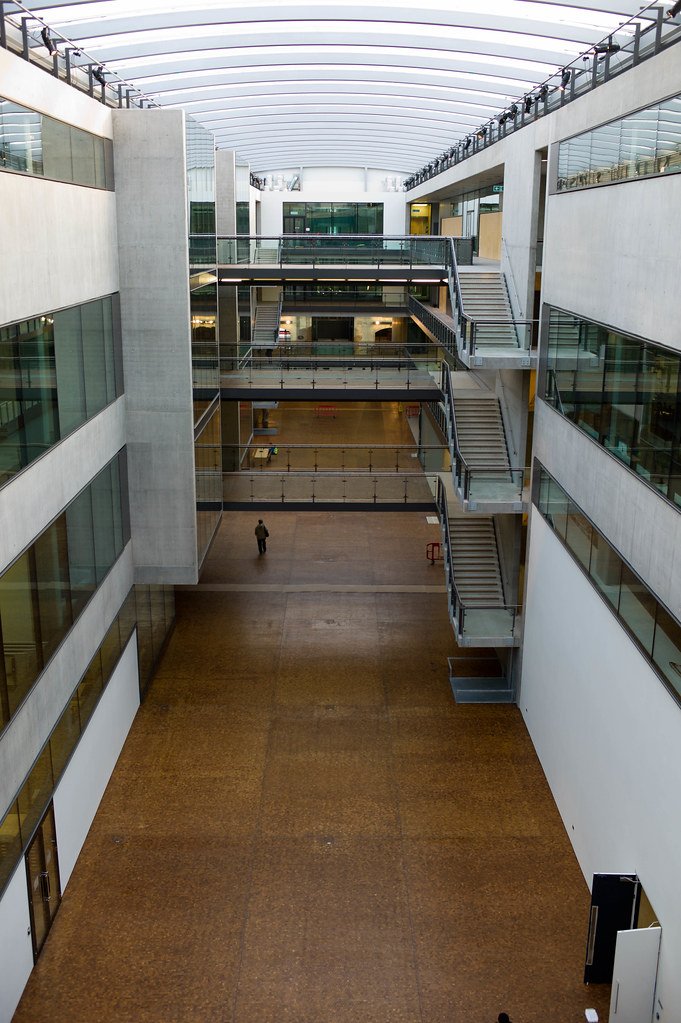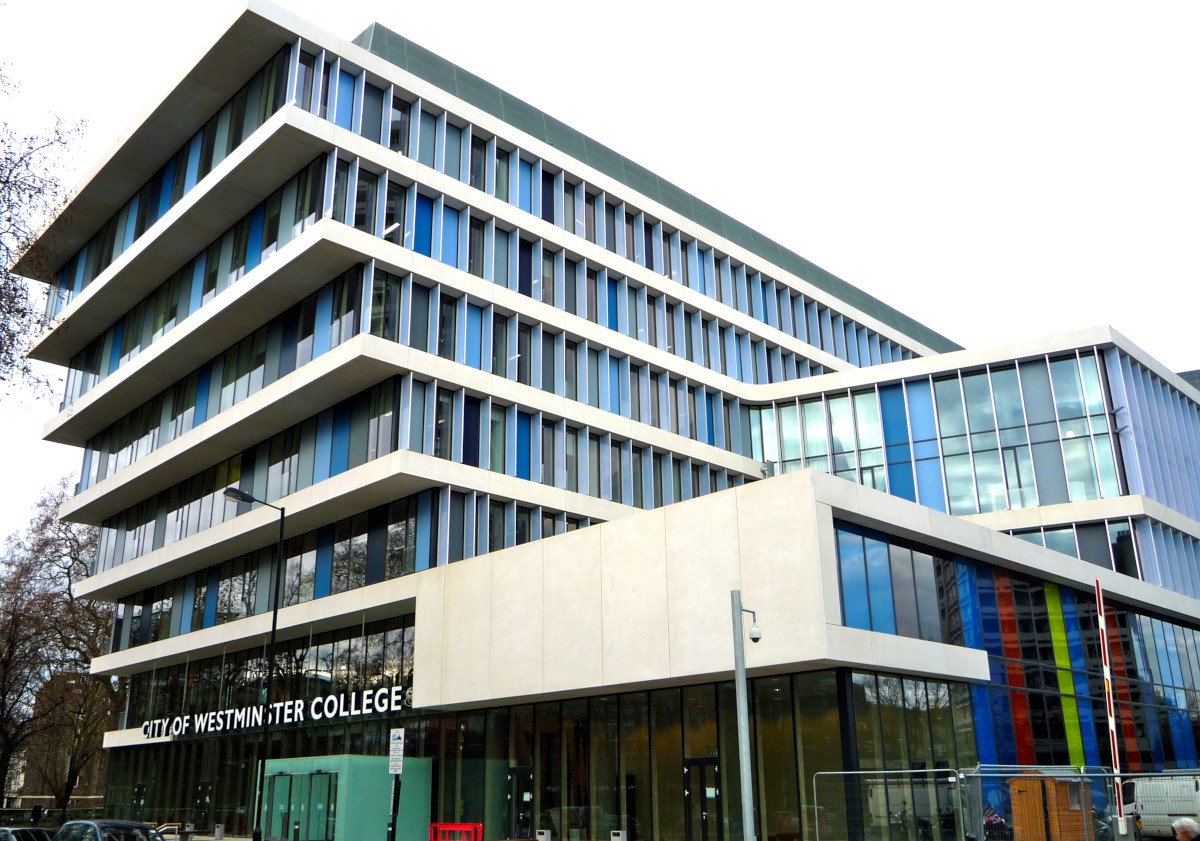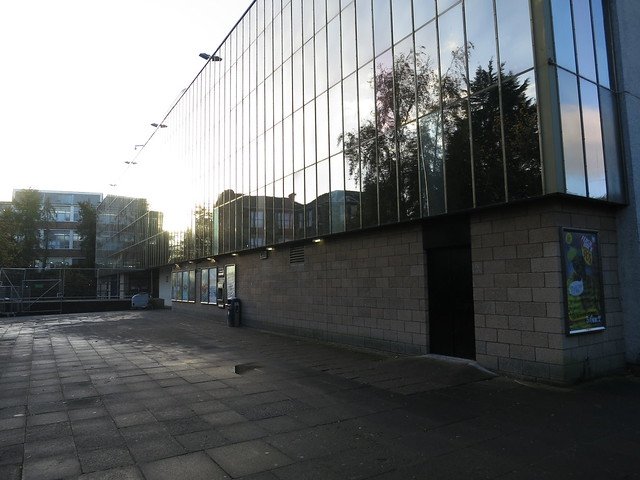
Several universities in the UK offer excellent programs in 3D animation. Here are some of the top ones:
- Bournemouth University: Known for its National Centre for Computer Animation (NCCA), Bournemouth University offers highly regarded courses in animation and visual effects.
- University of Hertfordshire: Their School of Creative Arts is well-known for its animation and 3D modeling programs.
- University of the Arts London (UAL): UAL offers various courses related to animation, including 3D animation, at institutions such as Central Saint Martins and London College of Communication.
- Teesside University: Their Animation and Visual Effects program is highly respected, offering opportunities to work on real-world projects.
- University of Westminster: Known for its strong emphasis on both theoretical knowledge and practical skills in animation and visual effects.
- Glasgow School of Art: Offers courses in animation and 3D modeling within its School of Simulation and Visualisation.
- University of Dundee: Their Animation program combines traditional animation techniques with digital technologies.
These universities provide a range of courses at undergraduate and postgraduate levels, with opportunities for specialization in various aspects of 3D animation, including character animation, visual effects, and storytelling. It’s also important to consider factors like faculty expertise, facilities, industry connections, and alumni success when choosing a university program.
Bournemouth University’s National Centre for Computer Animation(NCCA)
is renowned for its excellence in 3D animation education. Here are some key aspects of their courses:
- IndustryReputation: The NCCA has a strong reputation withinthe animation and visual effects industry, with many graduates goingon to work at top studios around the world, including Pixar,Industrial Light & Magic, and Framestore.
- Cutting-edgeFacilities: Bournemouth University boastsstate-of-the-art facilities, including motion capture studios, greenscreen studios, and industry-standard software and hardware,providing students with hands-on experience with the tools used inthe professional animation industry.
- ExpertFaculty: The faculty at NCCA consists of experiencedprofessionals with backgrounds in animation, visual effects,computer graphics, and related fields. They bring real-worldexperience and industry connections into the classroom, providingstudents with valuable insights and networking opportunities.
- Project-basedLearning: The curriculum at NCCA emphasizesproject-based learning, allowing students to work on a variety ofindividual and group projects throughout their course. This approachhelps students develop practical skills and build a strong portfolioof work that showcases their abilities to potential employers.
- SpecializationOptions: NCCA offers a range of courses and modulescovering various aspects of 3D animation, including characteranimation, visual effects, rigging, modeling, and more. This allowsstudents to tailor their education to their specific interests andcareer goals.
- IndustryPartnerships and Guest Lectures: NCCA has strongties with leading animation studios and industry professionals, whooften collaborate with the university on projects, provide guestlectures, and offer internship opportunities to students. Thisindustry engagement ensures that the curriculum remains relevant andup-to-date with the latest trends and technologies in the field.
Overall,Bournemouth University’s NCCA provides a comprehensive andindustry-focused education in 3D animation, preparing students forsuccessful careers in the competitive world of animation and visualeffects. More information on their 3D Animation course click here.

The University of Hertfordshire
offers a range of 3D animation courses within its School of Creative Arts. Here’s more about what you can expect from their programs:
- Strong Foundation in Animation: The university’s animation courses are designed to provide students with a solid foundation in both the technical and creative aspects of 3D animation. This includes learning about animation principles, storytelling, character design, and digital production techniques.
- State-of-the-Art Facilities: The School of Creative Arts is equipped with industry-standard facilities, including dedicated animation studios, computer labs with the latest software and hardware, motion capture suites, and sound studios. These facilities allow students to gain hands-on experience with the tools and technologies used in professional animation production.
- Experienced Faculty: The faculty members teaching in the animation programs at the University of Hertfordshire often have extensive experience working in the animation industry. They bring their practical knowledge and industry connections into the classroom, providing students with valuable insights and networking opportunities.
- Focus on Industry Collaboration: The university has strong ties with the animation industry, and students have the opportunity to work on real-world projects and collaborations with industry partners. This allows students to gain valuable experience and make connections within the industry while still studying.
- Specialization Options: The university offers various specialization options within its animation programs, allowing students to focus on areas such as character animation, visual effects, 3D modeling, rigging, and more. This enables students to tailor their education to their specific interests and career goals.
- Opportunities for Portfolio Development: Throughout their studies, students have the opportunity to build a strong portfolio of work showcasing their skills and creativity. This portfolio is essential for securing internships, placements, and employment opportunities in the animation industry after graduation.
Overall, the University of Hertfordshire’s 3D animation courses provide students with a comprehensive education that combines theoretical knowledge with practical skills, preparing them for successful careers in the competitive field of animation and visual effects. Click here for more information on their 3D animation and visual effects degree.

The University of the Arts London (UAL)
offers various courses related to animation, including 3D animation, across its colleges. Here’s an overview of what you can expect from their animation programs:
- Central Saint Martins (CSM): CSM offers courses in animation and other related fields such as graphic design, illustration, and visual communication. The animation programs at CSM focus on both traditional and digital animation techniques, providing students with a well-rounded education in the field.
- London College of Communication (LCC): LCC offers courses in animation and visual effects, including both undergraduate and postgraduate programs. The animation courses at LCC cover a range of topics, including character animation, motion graphics, storytelling, and experimental animation techniques.
- London College of Fashion (LCF): While primarily focused on fashion-related disciplines, LCF also offers courses that incorporate animation and digital media, such as fashion communication and digital fashion imagery. These courses explore the use of animation and visual effects in the context of fashion and branding.
- Chelsea College of Arts: Chelsea College of Arts offers courses in graphic design and communication, which may include modules or electives related to animation and motion graphics. Students have the opportunity to explore animation as a means of visual communication and expression within these programs.
- Wimbledon College of Arts: Wimbledon College of Arts offers courses in fine arts and theatre design, which may include elements of animation and digital media. Students have the opportunity to experiment with animation techniques as part of their broader artistic practice.
Overall, the animation courses at University of the Arts London provide students with opportunities to explore various aspects of animation, from traditional hand-drawn techniques to cutting-edge digital animation and visual effects. The university’s emphasis on experimentation, creativity, and interdisciplinary collaboration allows students to develop their own unique artistic voice and approach to animation. Additionally, London’s vibrant creative scene offers students access to industry professionals, studios, and events, providing valuable networking opportunities and real-world experience. For more information about their MA on computer animation click here.

Teesside University
is well-regarded for its Animation and Visual Effects program, which offers courses specifically focused on 3D animation and related disciplines. Here’s more information about what you can expect from their courses:
- Comprehensive Curriculum: The Animation and Visual Effects program at Teesside University covers a wide range of topics related to 3D animation, including character animation, modeling, rigging, texturing, lighting, rendering, and compositing. Students receive a comprehensive education that prepares them for careers in various areas of the animation and visual effects industry.
- Hands-on Learning: The university emphasizes hands-on learning, with students gaining practical experience using industry-standard software and hardware in dedicated animation studios and labs. They have access to state-of-the-art equipment, including motion capture facilities, green screens, and high-performance computers, allowing them to create professional-quality animations.
- Industry Engagement: Teesside University has strong links with the animation and visual effects industry, providing students with opportunities for industry placements, internships, and collaborative projects with industry partners. This industry engagement ensures that the curriculum remains relevant and up-to-date with the latest industry trends and technologies.
- Experienced Faculty: The faculty members teaching in the Animation and Visual Effects program at Teesside University are experienced professionals with backgrounds in animation, visual effects, computer graphics, and related fields. They bring their industry experience and expertise into the classroom, providing students with valuable insights and guidance.
- Specialization Options: The program offers opportunities for students to specialize in specific areas of 3D animation, such as character animation, visual effects, or technical animation. This allows students to focus on their areas of interest and develop expertise in their chosen field.
- Portfolio Development: Throughout their studies, students have the opportunity to build a strong portfolio of work showcasing their skills and creativity. This portfolio is essential for securing employment in the competitive animation and visual effects industry after graduation.
Overall, Teesside University’s Animation and Visual Effects program provides students with a rigorous and practical education in 3D animation, equipping them with the skills and knowledge needed to succeed in the dynamic and competitive field of animation and visual effects. For more information on their Animation degree please click here.

The University of Westminster
offers several courses related to 3D animation within its School of Media and Communication. Here’s more information about what you can expect from their animation programs:
- Industry-Relevant Curriculum: The 3D animation courses at the University of Westminster are designed to provide students with a strong foundation in both the technical and creative aspects of animation. The curriculum is constantly updated to reflect industry trends and technologies, ensuring that students graduate with the skills and knowledge needed to succeed in the animation industry.
- State-of-the-Art Facilities: The university boasts modern facilities, including animation studios equipped with industry-standard software and hardware. Students have access to cutting-edge technology, including motion capture equipment, green screens, and rendering farms, allowing them to create professional-quality animations.
- Expert Faculty: The faculty members teaching in the animation programs at the University of Westminster are experienced professionals with backgrounds in animation, visual effects, computer graphics, and related fields. They bring their industry experience and expertise into the classroom, providing students with valuable insights and guidance.
- Project-Based Learning: The curriculum emphasizes project-based learning, with students working on a variety of individual and group projects throughout their studies. This hands-on approach allows students to apply theoretical concepts to real-world scenarios, developing practical skills and building a strong portfolio of work.
- Collaborative Environment: The university encourages collaboration and interdisciplinary teamwork, allowing students to work with peers from other disciplines such as film, photography, and graphic design. This interdisciplinary approach fosters creativity and innovation, preparing students for the collaborative nature of the animation industry.
- Industry Connections: The University of Westminster has strong connections with the animation industry, providing students with opportunities for internships, placements, and industry collaborations. Students have the chance to network with industry professionals and gain valuable experience working on real-world projects.
Overall, the 3D animation courses at the University of Westminster offer students a comprehensive and industry-focused education, preparing them for successful careers in the competitive field of animation and visual effects. Click here for more information on their animation degree.

The Glasgow School of Art (GSA)
offers courses in animation within its School of Simulation and Visualisation. Here’s more information about their 3D animation programs:
- Focus on Creativity and Innovation: The 3D animation courses at GSA place a strong emphasis on fostering creativity and innovation. Students are encouraged to explore their artistic vision and develop their own unique style of animation, while also learning the technical skills required for 3D animation production.
- Hands-on Learning: GSA provides students with hands-on experience using industry-standard software and hardware in dedicated animation studios and labs. Students have access to state-of-the-art equipment, including high-performance computers, graphics tablets, and motion capture facilities, allowing them to create professional-quality animations.
- Collaborative Environment: The university encourages collaboration and interdisciplinary teamwork, allowing students to work with peers from other disciplines such as digital media, game design, and visual effects. This interdisciplinary approach fosters creativity and innovation, preparing students for the collaborative nature of the animation industry.
- Expert Faculty: The faculty members teaching in the animation programs at GSA are experienced professionals with backgrounds in animation, visual effects, computer graphics, and related fields. They bring their industry experience and expertise into the classroom, providing students with valuable insights and guidance.
- Project-Based Learning: The curriculum emphasizes project-based learning, with students working on a variety of individual and group projects throughout their studies. This hands-on approach allows students to apply theoretical concepts to real-world scenarios, developing practical skills and building a strong portfolio of work.
- Industry Connections: GSA has strong connections with the animation industry, providing students with opportunities for internships, placements, and industry collaborations. Students have the chance to network with industry professionals and gain valuable experience working on real-world projects.
Overall, the 3D animation courses at the Glasgow School of Art offer students a comprehensive education that combines technical skills with artistic creativity, preparing them for successful careers in the competitive field of animation and visual effects.

The University of Dundee
offers a Bachelor of Design (Hons) in Animation program within its Duncan of Jordanstone College of Art & Design. Here’s more information about their 3D animation courses:
- Combination of Traditional and Digital Techniques: The animation program at the University of Dundee provides students with a comprehensive education in both traditional and digital animation techniques. Students learn about the principles of animation, storytelling, character design, and visual communication, as well as gaining proficiency in 3D animation software and digital production tools.
- Hands-on Learning: The university emphasizes hands-on learning, with students gaining practical experience using industry-standard software and hardware in dedicated animation studios and labs. They have access to state-of-the-art equipment, including high-performance computers, graphics tablets, and animation software, allowing them to create professional-quality animations.
- Creative Collaboration: The animation program encourages collaboration and interdisciplinary teamwork, allowing students to work with peers from other disciplines such as illustration, graphic design, and digital media. This collaborative environment fosters creativity and innovation, preparing students for the collaborative nature of the animation industry.
- Expert Faculty: The faculty members teaching in the animation program at the University of Dundee are experienced professionals with backgrounds in animation, visual effects, computer graphics, and related fields. They bring their industry experience and expertise into the classroom, providing students with valuable insights and guidance.
- Project-Based Learning: The curriculum emphasizes project-based learning, with students working on a variety of individual and group projects throughout their studies. This hands-on approach allows students to apply theoretical concepts to real-world scenarios, developing practical skills and building a strong portfolio of work.
- Industry Connections: The University of Dundee has strong connections with the animation industry, providing students with opportunities for internships, placements, and industry collaborations. Students have the chance to network with industry professionals and gain valuable experience working on real-world projects.
Overall, the animation program at the University of Dundee offers students a comprehensive and industry-focused education, preparing them for successful careers in the competitive field of animation and visual effects.


